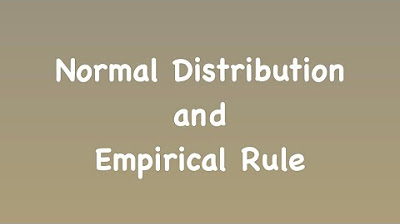Yaw Control - Flight Controls - Airframes & Aircraft Systems #28
Summary
TLDRThis lesson covers how an aircraft is controlled around its normal axis using the rudder, which is operated by the pilot's feet. The rudder maintains directional control, especially in situations like asymmetric power, crosswinds during takeoff and landing, and adverse yaw. The script also discusses the need for a rudder ratio changer on high-speed, multi-engine aircraft to prevent structural damage. Additionally, the lesson introduces the control position indicators used in modern aircraft, such as the Boeing 747 and Airbus ECAM systems, providing vital information about the status of flight controls and their associated hydraulic systems.
Takeaways
- 😀 Rotation around the aircraft's normal axis is controlled by the rudder.
- 😀 The rudder is typically attached to the trailing edge of the tail fin and is used to maintain directional control.
- 😀 Pilots control the rudder by moving the rudder pedals with their feet in the cockpit.
- 😀 Pushing the right rudder pedal moves the rudder to the right, causing the aircraft's nose to yaw right, and vice versa for the left pedal.
- 😀 The rudder is used to correct asymmetric power, crosswinds during takeoff and landing, adverse yaw, and propeller torque in single-engine aircraft.
- 😀 A rudder ratio changer mechanism is sometimes used in high-speed, multi-engine aircraft to prevent excessive structural loads at high speeds.
- 😀 The rudder ratio changer system adjusts the rudder deflection according to aircraft speed, offering less deflection at high speeds.
- 😀 At speeds below 160 knots, the rudder provides full deflection with full pedal movement, but above 380 knots, only about three degrees of travel is available.
- 😀 The primary flight control positions are shown on an indicator on the flight deck to keep pilots informed of their status.
- 😀 The Boeing 747 uses a simple electromechanical control indicator, while the Airbus aircraft uses a more advanced electronic centralized aircraft monitor (ECAM).
- 😀 The hydraulic system status for the flight controls is displayed on the ECAM, with colors changing to indicate failures (e.g., amber for a failure).
Q & A
What is the main purpose of the rudder in aircraft control?
-The rudder is used to control rotation around the aircraft's normal axis, allowing the pilot to maintain directional control, especially during asymmetric power situations, crosswinds, adverse yaw, spin recovery, and propeller torque corrections in single-engine aircraft.
How does the pilot operate the rudder on the aircraft?
-The rudder is operated by the pilot using rudder pedals in the cockpit. Pushing the right pedal moves the rudder to the right, causing the nose of the aircraft to yaw right, while pushing the left pedal moves the rudder to the left, causing the nose to yaw left.
What happens when the pilot pushes the right rudder pedal?
-When the pilot pushes the right rudder pedal, the rudder moves to the right, creating an aerodynamic force that causes the nose of the aircraft to yaw to the right.
What is the purpose of the rudder ratio changer in high-speed aircraft?
-The rudder ratio changer adjusts the amount of rudder deflection available at different speeds. At low speeds, full rudder deflection is available, but at high speeds, the system reduces the deflection to prevent excessive structural loads.
How does a simple rudder control system work?
-In a simple rudder control system, full rudder pedal movement results in full rudder deflection, allowing the pilot to control the yaw of the aircraft effectively.
Why is a rudder ratio changer necessary in high-speed multi-engine aircraft?
-A rudder ratio changer is necessary to provide adequate control of the aircraft during an engine failure at low speeds, but at higher speeds, it reduces the rudder deflection to prevent excessive aerodynamic loads on the aircraft structure.
What is depicted in the graph showing the operation of a rudder ratio changer?
-The graph illustrates how the rudder deflection decreases progressively with increasing speed. At speeds above 160 knots, the deflection gradually reduces, and at 380 knots, only about 3 degrees of rudder travel is available with full pedal deflection.
How does the control position indicator help the pilot?
-The control position indicator displays the position of the aircraft's primary flight controls, helping the pilot stay informed about the control surfaces' movements during flight.
What are the key differences between the control position indicators on the Boeing 747 and Airbus aircraft?
-The Boeing 747 uses an older electromechanical indicator that is simple and limited in the information it displays. In contrast, Airbus aircraft use an electronic system like the ECAM, which provides a more detailed overview, including the status of hydraulic systems operating the flight controls.
What does the color change of the hydraulic system indicators mean?
-The hydraulic system indicators are normally green, indicating normal operation. If a failure occurs, the indicators change to amber, signaling a problem with the corresponding hydraulic system.
Outlines

Esta sección está disponible solo para usuarios con suscripción. Por favor, mejora tu plan para acceder a esta parte.
Mejorar ahoraMindmap

Esta sección está disponible solo para usuarios con suscripción. Por favor, mejora tu plan para acceder a esta parte.
Mejorar ahoraKeywords

Esta sección está disponible solo para usuarios con suscripción. Por favor, mejora tu plan para acceder a esta parte.
Mejorar ahoraHighlights

Esta sección está disponible solo para usuarios con suscripción. Por favor, mejora tu plan para acceder a esta parte.
Mejorar ahoraTranscripts

Esta sección está disponible solo para usuarios con suscripción. Por favor, mejora tu plan para acceder a esta parte.
Mejorar ahoraVer Más Videos Relacionados

Pitch Control - Flight Controls - Airframes & Aircraft Systems #26

Safety Features - Landing Gear - Airframes & Aircraft Systems #18

Volumes of Revolution (Disk Method)

Arduino RC Airplane | 100% DIY

Normal Distribution and Empirical Rule

Akibat Mengabaikan Rekomendasi Invesetigator | Turkish Airlines 981
5.0 / 5 (0 votes)
